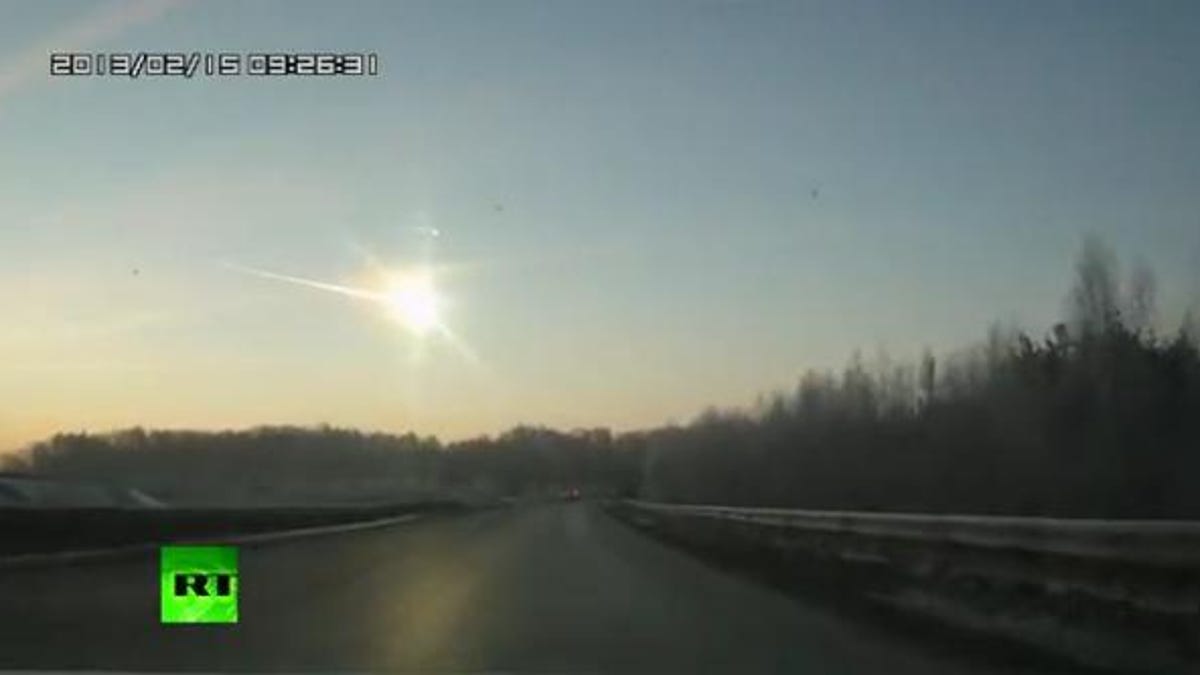Watch Russian meteorite's impact via security cam
Moments after exploding with the energy of an atomic bomb in the skies over the city of Chelyabinsk, the space rock quietly let itself into a lake outside of town, not far from the watchful eye of a security camera.

Last February, a fireball streaked past the Russian town of Chelyabinsk, releasing 500 kilotons of energy as it ran up against some serious resistance from Earth's atmosphere and exploded, blowing out windows all over town in the process. The biggest resulting chunk of space rock finally ended its journey by crashing into a frozen lake a few dozen miles away.
Remarkably, the moment of impact was captured by a security camera located at what looks like some sort of maintenance shop near the edge of the lake. Even more remarkable is the fact that an object that had essentially caused an explosion of A-bomb proportions in the sky just moments earlier was whittled down to the size of a small boulder that created little more than a whispy puff of snow and dust upon hitting the surface of the lake.
This is likely because the snow and crust of ice on the lake offered next to no resistance to the meteorite that could have still been traveling at thousands of miles per hour when it came knocking -- sort of like placing a sheet of aluminum foil in the path of a bullet. Had the meteorite struck something more solid, like say, that truck in the shot, we might be looking at photos of a large crater right now.
Watch the edited version of the video below from the SETI Institute, which also pulled out individual still frames to better illustrate the moment of impact. Talk about a close call. And now scientists tell us it won't be the last.

